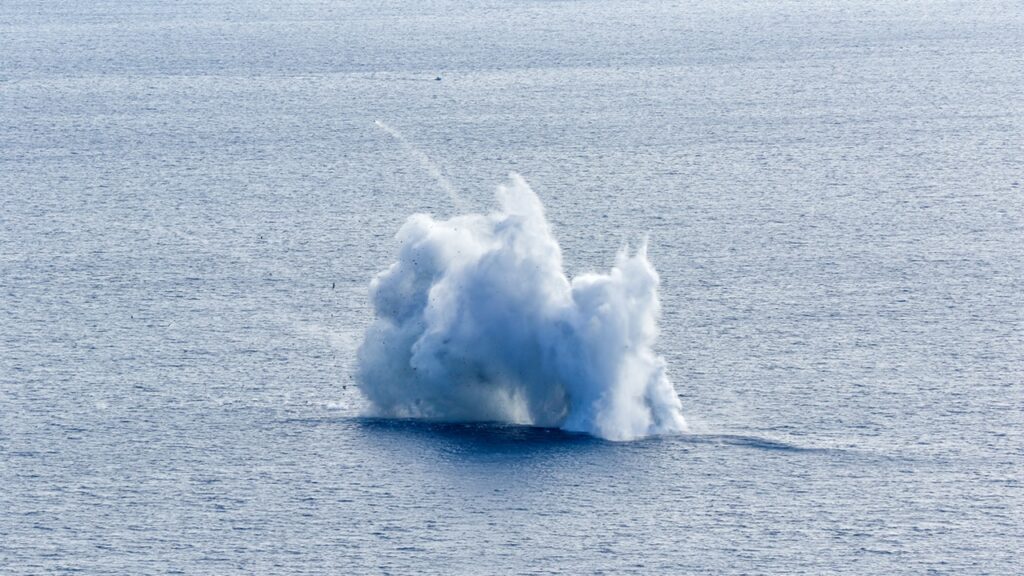
Turkey has unveiled a new naval drone system designed to counter the growing threat posed by kamikaze drones and explosive-laden boats. The Arida-M Counter-Kamikaze Unmanned Surface Vehicle (USV) was introduced by Anadolu Robotik during the SAHA EXPO 2024 in Istanbul, showcasing Turkey’s commitment to advancing unmanned naval technology.
As naval warfare increasingly incorporates asymmetric tactics, Turkey has positioned itself as a leader in unmanned systems. The Arida-M, developed in collaboration with Sekizaltmiş Teknoloji, aims to protect naval assets, ports, and coastal facilities from low-cost yet high-impact attacks. This initiative reflects the urgency of countering threats highlighted by recent conflicts, such as the Russia-Ukraine War and Houthi operations in the Red Sea.
Kamikaze USVs have emerged as significant threats to traditional naval vessels. They are typically small, fast, and capable of delivering explosive payloads, which makes them difficult to detect and neutralize. The effectiveness of these drones was evident during engagements in the Black Sea, where Ukrainian drones successfully targeted Russian ships. Recognizing this emerging threat, nations worldwide are investing in counter-drone systems. Turkey’s Arida-M is a response to this challenge, building on its established expertise in lethal drone technology.
Development and Features of the Arida-M
The construction of the Arida-M began in October 2024, with the project divided into two main phases. The first phase focuses on developing the Arida-M as a “smart munition,” with sea trials expected to commence in May 2025. Following these trials, a second phase will introduce the Arida-T command unit and additional prototypes, leading to live detonation tests planned for November 2025. This phased approach allows for continuous improvements based on real-world data.
The Arida system is designed to be modular, consisting of two main subsystems that fulfill various roles. The Arida-T serves as a command-and-control platform, equipped with electro-optical/infrared (EO/IR) sensors, hydrophones, radar, and a 30 km range jammer for disrupting enemy communications. The Arida-M, on the other hand, is built to intercept enemy USVs, utilizing the Muhafiz USVs as its core. These vehicles can carry a 30-kilogram payload for sensors and communications, along with 50 kilograms of explosives for neutralizing targets.
Engineered for various operational environments, the Muhafiz USVs exhibit versatility, capable of functioning in harsh sea conditions. They incorporate multi-layered sensing technology, combining radar, EO systems, and hydrophones to enhance detection capabilities, even against low-signature threats. Notably, the USVs are designed for autonomy, enabling them to deploy from warships or shore bases, navigate independently, and engage targets according to predefined protocols while maintaining emission control to evade detection.
Implications for Modern Naval Warfare
The introduction of the Arida-M system positions Turkey as a frontrunner in the field of USV countermeasures. This technology is not only significant for Turkey’s naval capabilities but also has potential export value for allied nations facing similar threats. By offering an effective and cost-efficient counter to kamikaze tactics, the Arida-M enhances layered defense strategies, complementing existing systems such as Turkey’s ULAQ USV family.
As global navies increasingly adopt unmanned technologies, the Arida-M underscores Turkey’s innovative approach to defense engineering. It reflects a broader trend towards integrating advanced technologies into maritime operations, fostering international collaborations and bolstering Turkey’s defense industry. The ongoing trials and phased rollouts of the Arida-M promise to redefine naval security, adapting to the rapidly evolving landscape of asymmetric warfare.
In conclusion, the Arida-M counter-Kamikaze USV system signifies a strategic advancement for Turkey, blending autonomy, speed, and precision to address emerging maritime threats. As the testing phase progresses, the potential for the Arida-M to reshape naval engagements continues to grow, ensuring that Turkey remains at the forefront of modern naval defense.







